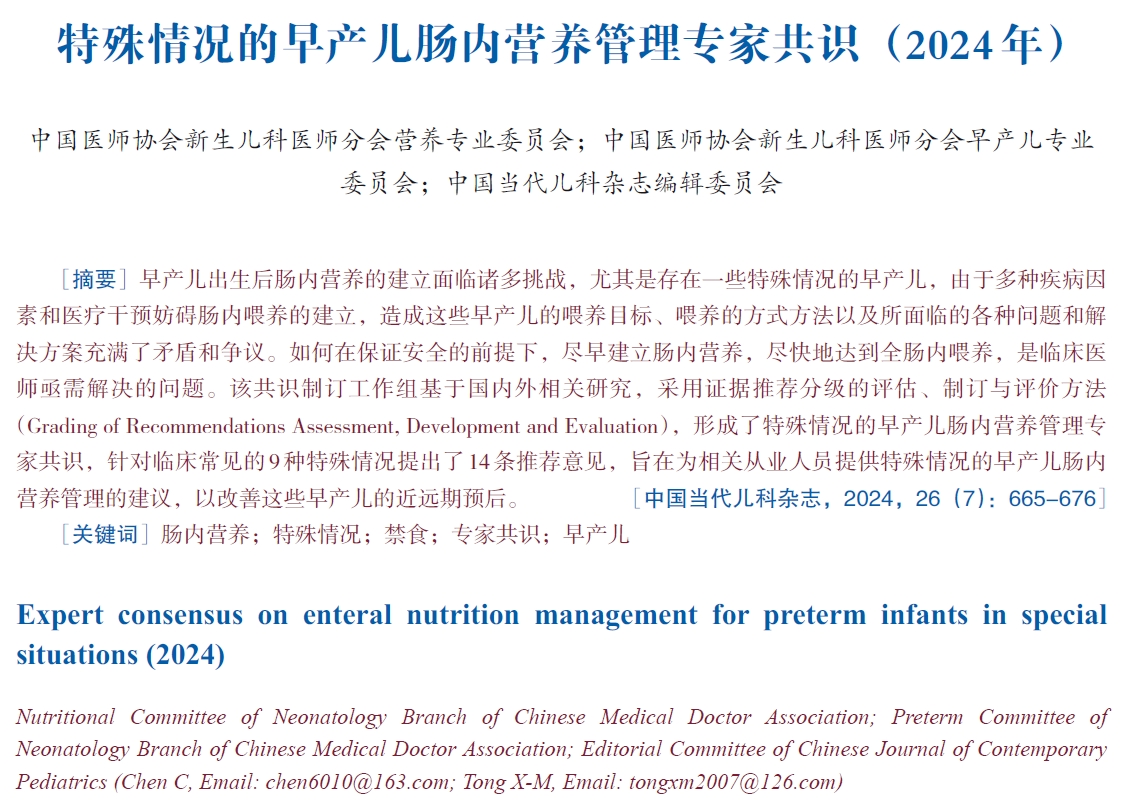 PDF(773 KB)
PDF(773 KB)


特殊情况的早产儿肠内营养管理专家共识(2024年)
中国医师协会新生儿科医师分会营养专业委员会;中国医师协会新生儿科医师分会早产儿专业委员会;中国当代儿科杂志编辑委员会
中国当代儿科杂志 ›› 2024, Vol. 26 ›› Issue (7) : 665-676.
 PDF(773 KB)
PDF(773 KB)
 PDF(773 KB)
PDF(773 KB)
特殊情况的早产儿肠内营养管理专家共识(2024年)
Expert consensus on enteral nutrition management for preterm infants in special situations (2024)

Enteral nutrition / Special situation / Fasting / Expert consensus / Preterm infant